Cultural, spiritual, historical and origin tourism in Thai Nguyen is increasingly chosen by many tourists to explore and experience the culture, beliefs and spirituality of new lands.
Uncle Ho Memorial House on top of De Pass in Phu Dinh Commune, Dinh Hoa District, Thai Nguyen Province. (Photo: Dai Tu District Electronic Information Page)
In Thai Nguyen province, there are over 1,000 historical and cultural relics that have been inventoried; over 550 intangible cultural heritages have been counted, these are places of great historical, cultural and tourism value.
With the orientation of developing 4 main tourism product lines including cultural, spiritual, historical, and origin tourism; eco-tourism, resort tourism; community and rural tourism associated with tea culture; MICE tourism, sports , and adventure cave exploration, in recent years, relic sites and sites in the province have been gradually restored and embellished to preserve and promote the value of the relics; as a place for people and tourists inside and outside the province to visit, offer incense, and commemorate.
Among them, cultural, spiritual, historical and origin tourism is increasingly chosen by many tourists to explore and experience the culture, beliefs and spirituality of new lands, opening up opportunities to develop diverse products for Thai Nguyen tourism industry.
President Ho Chi Minh Memorial House
President Ho Chi Minh Memorial House on the top of De Pass, Phu Dinh Commune, Dinh Hoa District (also known as Uncle Ho Temple) is located in the ATK Dinh Hoa Special National Historical Relic Complex - the center of the Windy Capital of the Viet Bac War Zone in the past.
The Uncle Ho Memorial House was built on a high hill shaped like a turtle's back at the top of De Pass, leaning against the Hong Mountain Range, protected by mountains on three sides. The front side overlooks the Tin Keo and Na Lom fields, near Khuon Tat - where Uncle Ho lived and worked during the Resistance War against the French and Tin Keo, where Uncle Ho lived in the years (1947, 1948, 1953 - early 1954).
This is the largest Uncle Ho Temple in Vietnam, built at the "left blue dragon, right white tiger" position of the ATK Dinh Hoa historical relic site, the center of the Windy Capital of the Viet Bac War Zone in the past.
The entire project has a total area of 16,000m2 including the Four Pillars, the Three Gate, the Incense Offering House in memory of and displaying images and documents about the cultural celebrity Ho Chi Minh.
President Ho Chi Minh Memorial House on top of De Pass. (Photo: Thai Nguyen Provincial Electronic Information Portal)
National historical site 27/7
27/7 National Historical Site, Ban Co Hamlet, Hung Son Town, Dai Tu District. Located in the master plan of Hung Son Town, which has been recognized as a type IV urban area since 2019, the 27/7 Relic Site has a beautiful landscape because it has been newly renovated and embellished. Passing through the gate of the Relic Site, many people feel that the scenery here is like a park, with cool green trees, flowers blooming in full bloom, a large lake with fish swimming around... The ceremony ground is large, shaded by hundreds of years old trees.
In the middle of the cool, spacious campus of the historical site is a cylindrical white marble slab with the inscription: "Here, on July 27, 1947, 300 cadres, soldiers and representatives of local people gathered to listen to the announcement of Uncle Ho's letter, recognizing the birth of War Invalids and Martyrs Day in our country."
The stone stele marking the birth on July 27 and the Memorial House at the National Historical Site on July 27. (Photo: Hoang Nguyen/VNA)
National historical site of 60 martyrs of the 915th Youth Volunteer Company
The relic site in Gia Sang ward, Thai Nguyen city, is where 60 youth volunteers heroically sacrificed their lives on Christmas Eve 1972 while on a mission to transport goods to support the southern battlefield.
In 2009, the historical site and memorial site of the 915th Company's youth volunteers who sacrificed their lives at Luu Xa, Gia Sang Ward, Thai Nguyen City was recognized as a National Historical Site by the Ministry of Culture, Sports and Tourism. At the same time, the 915th Company was also awarded the title of Hero of the People's Armed Forces by the President.
By 2018, the relic had been built, restored, embellished and expanded in area from 1.1ha to 4.75ha including a memorial house, space for displaying documents and artifacts, a reception area, a three-entrance gate, a ceremonial gate-four pillars...
The national historical site of 60 martyrs of the 915th Company, 91st Team of Bac Thai, in Gia Sang Ward, Thai Nguyen City, has just been invested in and renovated. (Photo: Hoang Nguyen/VNA)
Duom Temple
The temple is located at the foot of Duom mountain, Dong Dat commune, Phu Luong district. The temple worships Duong Tu Minh - the leader of Phu Luong district, the son-in-law of two Ly kings, who had many merits in firmly protecting the national border of Dai Viet in the 12th century.
Duom Temple was built in the 12th century and has been renovated many times but still retains the ancient beauty of traditional architecture. The temple is located at the foot of Duom Mountain, with a three-door gate facing the national highway. The main items include the bell tower, the Lower Temple, the Middle Temple, and the Upper Temple, arranged against the mountainside in order from low to high. The historical relic and scenic spot of Duom Temple was ranked nationally in 1993.
Duom Temple. (Photo: Quan Trang/VNA)
Doi Can Temple Historical Site
The historical site of Doi Can Temple is located in the grounds of the Monument to the Heroes and Martyrs of Thai Nguyen Province, in Hoang Van Thu Ward, Thai Nguyen City.
Doi Can's real name was Trinh Van Dat (1881-1918), from Yen Nhien village, Thuong Nhung commune, Vinh Tuong district, Vinh Yen province (now Vinh Phuc province). He was forced to join the green-clad army stationed in Thai Nguyen from 1910.
Doi Can and Luong Ngoc Quyen led Vietnamese soldiers, political prisoners and Thai Nguyen people to revolt and occupy the provincial capital from the night of August 30, 1917 to September 5, 1917, naming the country Dai Hung, with a yellow flag with five red stars as the national flag. The French colonialists gathered over 3,800 troops to suppress the uprising. The insurgents fought for more than 6 months with the French army in 6 provinces of Northern Vietnam. Determined not to fall into the enemy's hands, Doi Can committed suicide at Phao Mountain, Cu Van Commune, Dai Tu District, Thai Nguyen Province on January 5, 1918.
Doi Can Temple, along with a number of other relics associated with the 1917 Thai Nguyen Uprising, was ranked as a national historical relic in 1997.
(Photo: Thai Nguyen Provincial Party Committee Electronic Information Portal)
Dan Pagoda
Dan Pagoda (also known as Thinh Dan Pagoda) is located in Thinh Dan ward, Thai Nguyen city.
The pagoda was built by the people during the Nguyen Dynasty with a small architecture. Before the revolution, the pagoda was used by Viet Minh cadres as a place to come and go, meet, discuss fighting the French, expelling the Japanese, and regaining independence and freedom.
The heroic memories of the day General Vo Nguyen Giap led the main force from Tan Trao Banyan Tree to liberate Thai Nguyen town and chose Dan Pagoda as the "headquarters", gathering soldiers and people, and making it the "headquarters" to command the attack on the Japanese in the town center are still often recalled by the people here every historic autumn.
The pagoda was ranked as a National Historical Relic in 2011.
(Photo: Thai Nguyen Tourism Portal)
Van-Vo mountain relic site
The Van-Vo mountain relic site is located at the foot of Tam Dao mountain, where Luu Nhan Chu is worshiped - a famous general of the Lam Son uprising led by Le Loi against the Ming invaders in the 15th century.
The relic complex includes two mountains, Van and Vo, symbolizing the wisdom and bravery of the ancient hero. In Van and Vo mountains, there is a mysterious natural cave system hundreds of meters long. Next is Quan Ngua hill with vast pine forests and trenches, this is where Luu Nhan Chu and his army trained soldiers and horses, and accumulated food for the battles of King Le Loi later.
The Van-Vo Mountain Festival opens on the 4th day of Lunar New Year every year, attracting many tourists from all over the country to attend the festival.
Phuong Do Temple
Phuong Do Communal House is located in Phuong Do village, Xuan Phuong commune, Phu Binh district. Phuong Do is the largest ancient communal house among the remaining communal houses in Thai Nguyen today, and the architectural and artistic relic of the communal house is also one of the typical architectural types of Vietnam.
The communal house worships the village's Thanh Hoang, Cao Son Quy Minh Dai Vuong, also known as Duong Tu Minh, a son-in-law of the Ly Dynasty, who made great contributions to protecting the northern border of the country and developing the economy of the ancient Phu Luong district, present-day Thai Nguyen province...
Not only is it an ancient communal house with unique Vietnamese architecture, Phuong Do communal house is also an important base of the Party's activities during the revolutionary movement, leading to the uprising to seize power and in the resistance war against the French colonialists.
In September 1945, Phuong Do communal house was chosen as the place to hold the flag-raising ceremony to celebrate the success of the August Revolution. The communal house continued to be the place to open propaganda classes on the Party and Government's policies and guidelines; movements such as "Popular Education" and "Golden Week" were also held here...
In 1993, the communal house was recognized as a national historical relic. In 2018, Phuong Do Communal House Festival was included in the list of national intangible cultural heritage.
(Photo: Thai Nguyen Tourism Portal)
Hang Pagoda
Hang Pagoda is also known as Kim Son Tu or Tien Lu Phat Dong. On February 26, 1999, this pagoda was recognized by Thai Nguyen province as a historical-cultural relic and national scenic spot. Today, this pagoda has become a sacred Buddhist place and a famous spiritual destination of the province.
This pagoda is one of the largest pagodas in the province, thousands of years old and located in a prime location. The pagoda is located in the middle of 3 large mountains, on a flat land, with a poetic river flowing in front. The combination of natural beauty and beautiful natural architecture makes Hang Pagoda a very attractive spiritual destination in Thai Nguyen.
(Photo: Thu Hang/VNA)
Phu Lien Pagoda
Phu Lien Pagoda, whose Chinese name is Phu Lien Tu or Phu Chan Thien Tu, is located in Hoang Van Thu Ward, Thai Nguyen City. The pagoda was built a long time ago on a low hill near the Cau River in the northeastern area of Phu Lien Commune, Tuc Duyen District, Dong Hy District in the past. In 1896, the French colonialists built a residence on this hill, so the pagoda moved to the location that is now Hoang Van Thu Ward, Thai Nguyen City.
Phu Lien Pagoda is a place associated with many historical events. In the late 19th and early 20th centuries, the pagoda sheltered and hid some of the insurgents of Hoang Hoa Tham and Doi Can. In 1946, this pagoda placed ballot boxes for the election of the 1st National Assembly of the Democratic Republic of Vietnam.
(Photo: Thai Nguyen Tourism Portal)
Cau Muoi communal house-temple-pagoda relic complex
The Cau Muoi communal house-temple-pagoda relic complex in Tan Thanh commune, Phu Binh district, was built during the Later Le dynasty, about 300 years ago, and is named after the village's location. The relic complex includes 1 communal house, 2 temples and 1 pagoda, located against the mountain.
Cau Muoi communal house-temple-pagoda not only has cultural, historical and religious value, it is also an important revolutionary relic, marking many historical events in the two resistance wars against France and America.
Luc Giap Temple
Luc Giap Temple, located in Dac Son ward, Pho Yen city. Every year, the temple opens a festival on March 15 (lunar calendar) to commemorate the famous people Duong Tu Minh, Luu Nhan Chu, and Do Can.
Luc Giap Temple is an ancient architectural work of the Le Dynasty. The pillars are made of ironwood and have retained their shiny black color over the centuries. All the pillars, the first couplets, and the floorboards in front of the sanctuary are delicately and elaborately carved with images of dragons, unicorns, turtles, and phoenixes. In particular, the two main doors to the sanctuary are beautifully embossed with the Le Dynasty's two dragons facing the moon, achieving the level of sophisticated traditional art. The worshiping objects here such as pedestals, shrines, statues, and offerings are all painted red and gilded, majestic and solemn.
Up to now, the temple still preserves some precious artifacts of the Nguyen Dynasty such as the bell, two bronze incense altars, some large ancient porcelain bowls. The number of artifacts remaining at the temple today is very small but has artistic and historical value.
With these values, Luc Giap Temple was ranked as a national historical-artistic relic in Decision No. 774/QD-BT dated June 21, 1993 of the Ministry of Culture and Information. In 2024, Luc Giap Temple Festival was included in the List of National Intangible Cultural Heritage.
(Photo: Thai Nguyen Electronic Literature Magazine)
Khanh Long Pagoda
Khanh Long Pagoda was formerly known as Lang Ngo Pagoda by local people. The pagoda is located on a high hill with an area of 2.5 hectares in Ngo hamlet, Tan Hoa commune, Phu Binh district, Thai Nguyen province.
The temple is built mainly of stone in a closed campus according to ancient temple architecture including the gate, the shrine, the bell tower, the drum tower, the ancestral temple, the mother temple, the guest house, the deer park... all creating a quiet and solemn space. The temple campus is always shaded by ancient banyan and rosewood trees, creating a cool feeling on hot summer days.
Khanh Long Pagoda is located on the road to Cau Muoi communal house-temple-pagoda, so this is a series of spiritual destinations that attract tourists in Phu Binh district in particular and Thai Nguyen province in general./.
According to (Vietnam+)
https://www.vietnamplus.vn/nhung-dia-diem-du-lich-tam-linh-ve-nguon-noi-tieng-o-thai-nguyen-post988752.vnp
Source: http://vinhphuctv.vn/Qu%E1%BA%A3n-tr%E1%BB%8B/Tin-t%E1%BB%A9c-chung/ID/360244/Nhung-ia-iem-du-lich-tam-linh-ve-nguon-noi-tieng-o-Thai-Nguyen


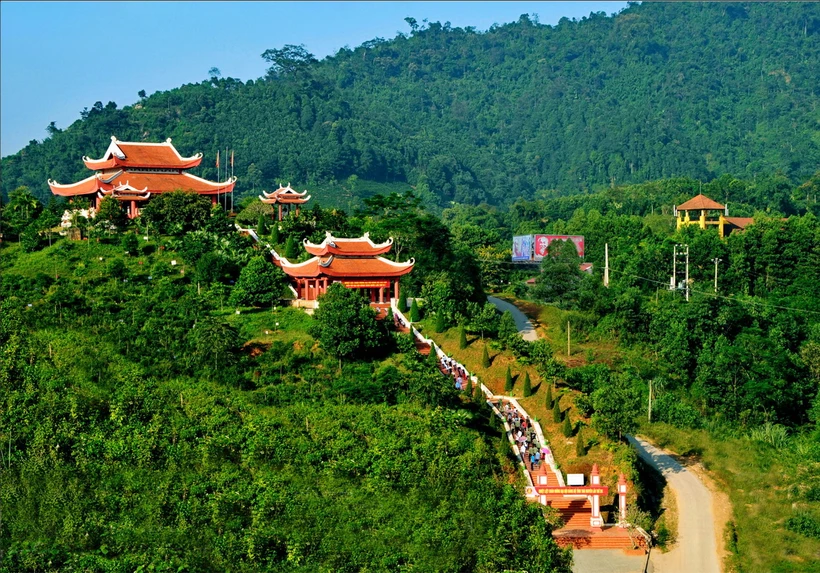
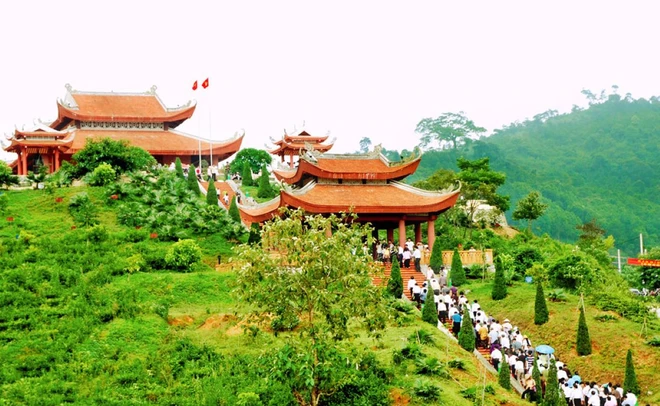


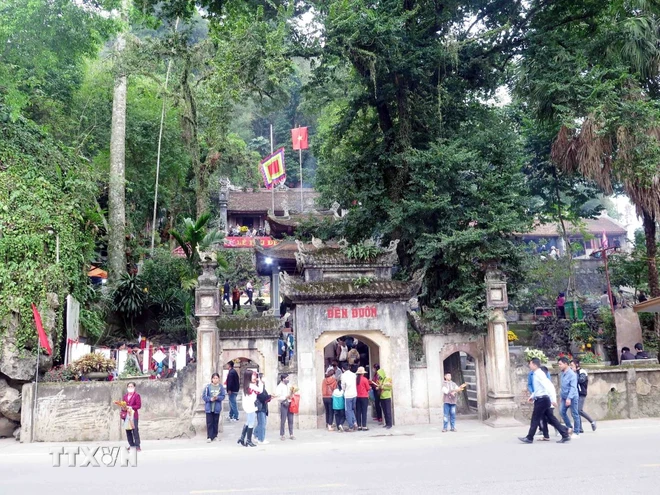
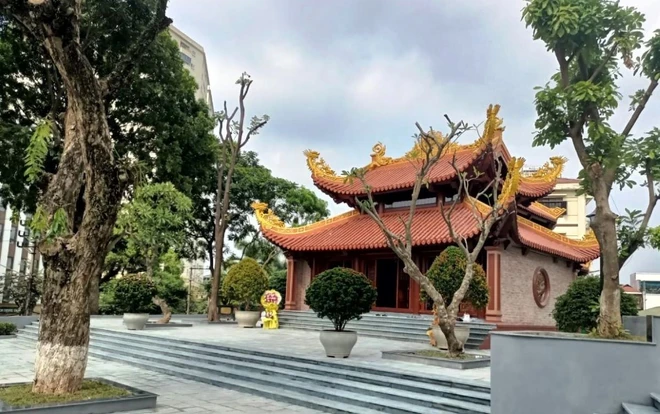
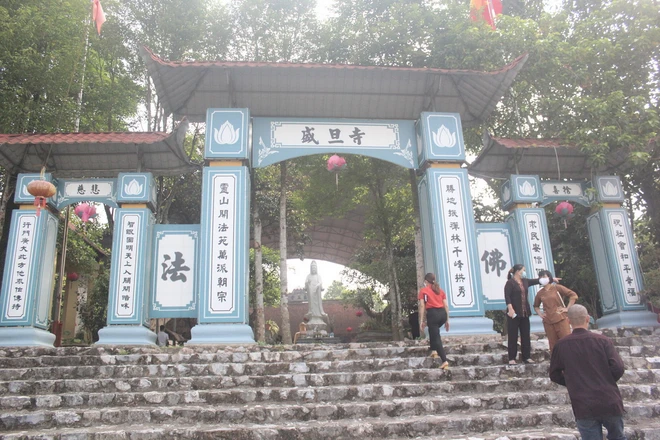
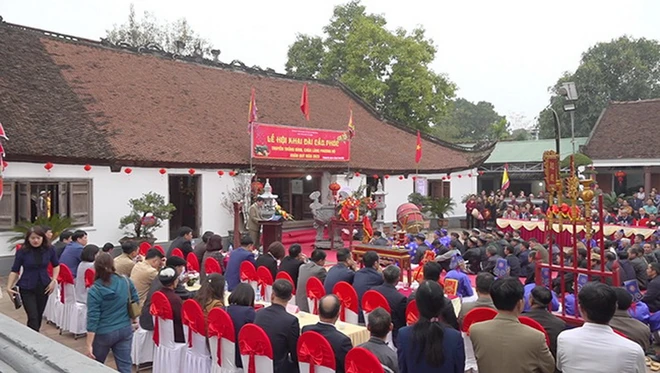
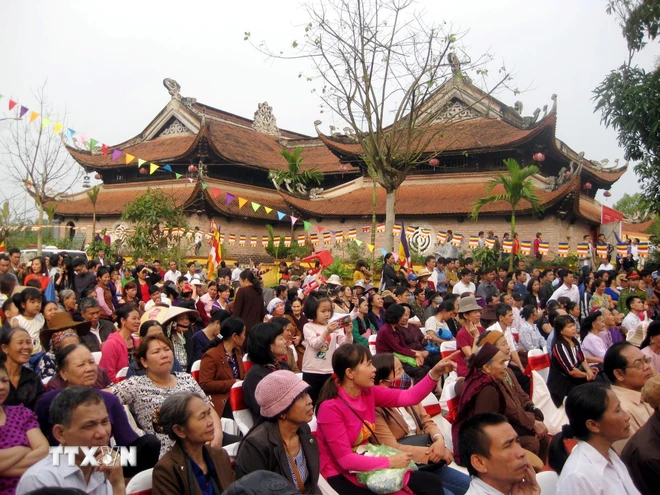
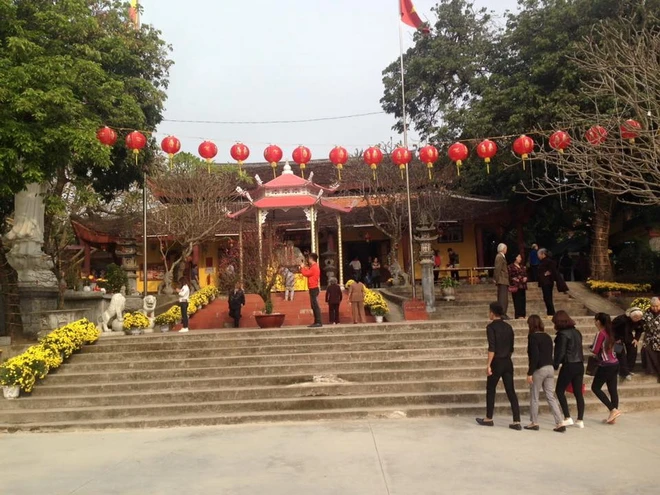
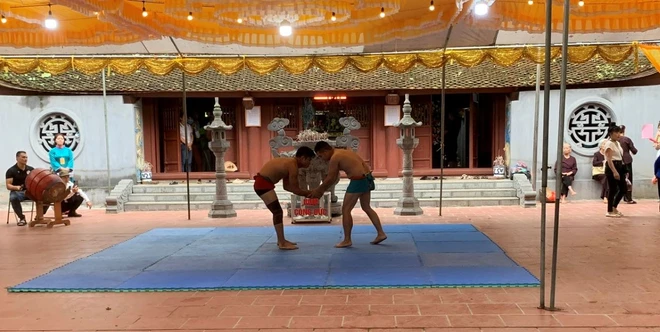







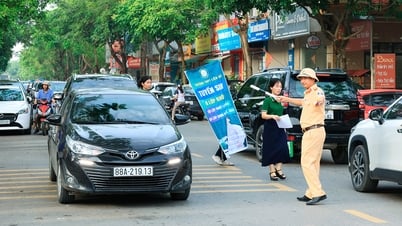


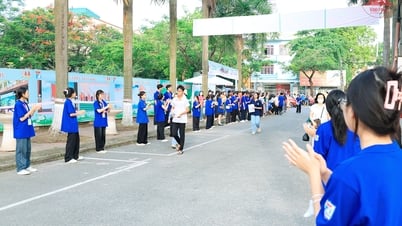
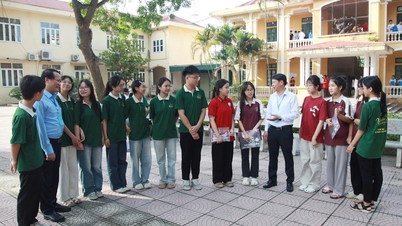
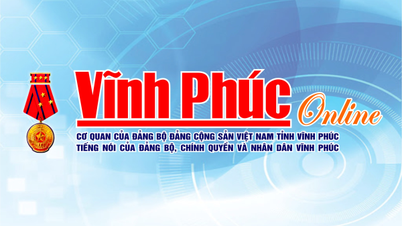









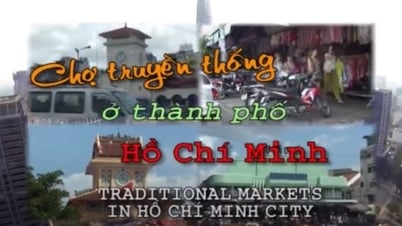




























































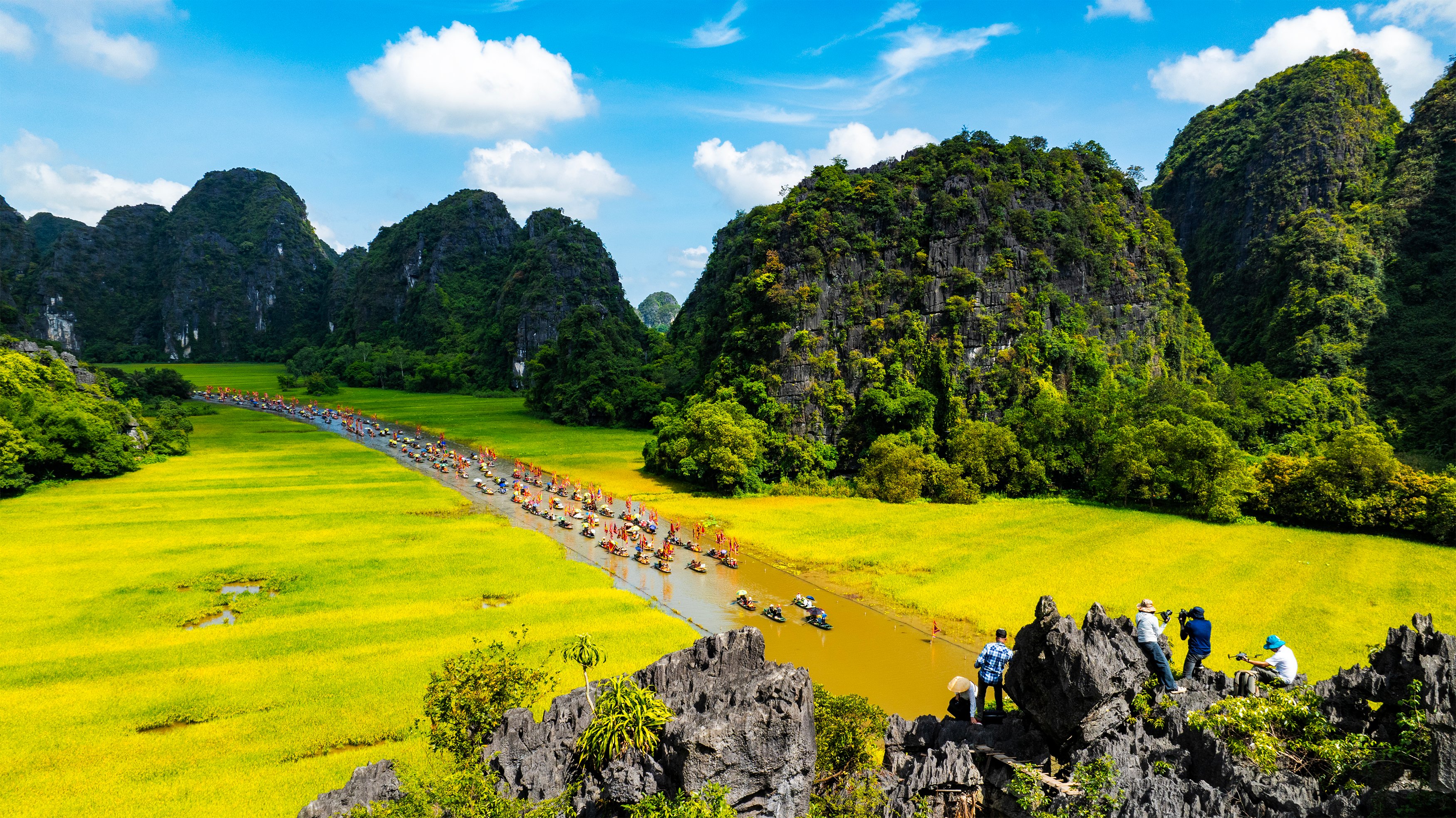



Comment (0)